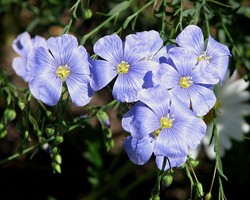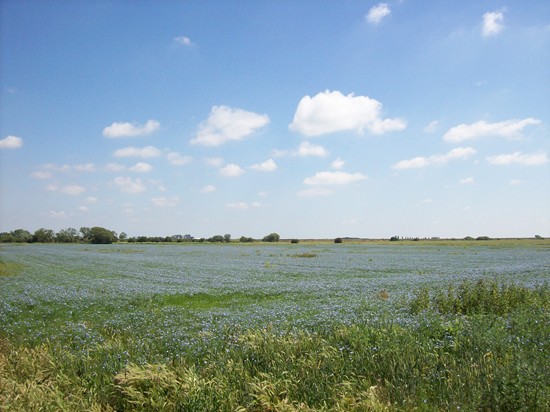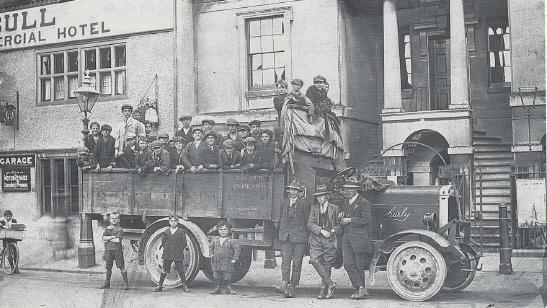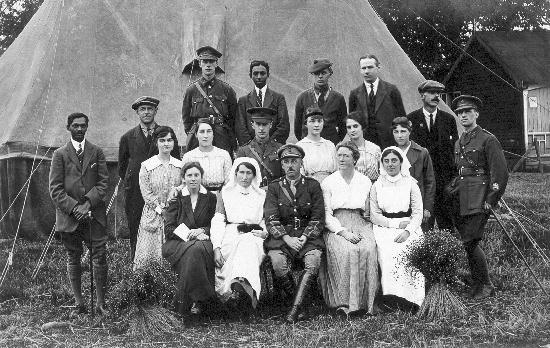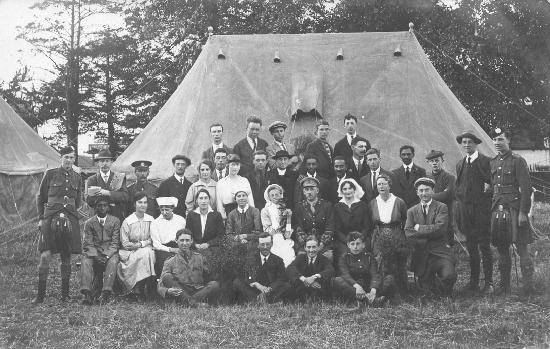|
Flax
A popular crop for farmers in past times was flax and a small but thriving industry became established in Bourne during the early years of the 20th century. Flax is a plant grown for its fibrous stems, from which linen is made. They are long, unbranched and wiry with narrow and hairless lance-shaped alternate leaves and small bright blue flowers. It belongs to the family Linaceae and has the botanical name Linum usitatissimum. Flax had been cultivated in South Lincolnshire from the earliest times, spinning and weaving being practised by the Britons and was still being grown in large quantities in the 18th century. The growing of flax was very similar to that of hemp, the process being to sow the seed in May and harvest at old Lammas (August 1st), usually by being pulled up by hand. It was then bound into sheaves, steeped in water or retted and then laid on an eddish [stubble] field where it remained for two or three weeks before being tied into bundles, taken to the barn or mill where it was swingled, that is beaten and scraped with a long wooden implement to remove the coarser particles, and then sent to market. There was a good profit on an average crop in the late 19th century with several flax mills in the county to handle it, notably at Surfleet, and there was also an annual fair for hemp and flax at Spalding, held on April 27th. Neither of these crops were grown in the fens for many years but the cultivation of flax on a larger scale was revived during and after the Great War of 1914-18 and the old maltings building at the corner of Wherry's Lane and Burghley Street was converted for the processing, providing a large number of jobs. The Stamford Mercury reported on Friday 10th January 1919: The de-seeding of the flax harvested in the Bourne district has already commenced in the building which has been unoccupied for several years and has undergone considerable structural alterations, having been adapted for the purpose, and suitable machinery installed. As soon as possible, they will be working all night as well as day. The majority of the straw, after being through the mill, is being loaded on rail. The work is finding employment for a considerable number of hands, chiefly females. Bringing in the flax harvest also attracted a large number of itinerant workers who were brought in by lorry, rather like the gang master system which now operates in some areas of the Lincolnshire fens. In the summer of 1918, for instance, 500 workers were encamped on the Abbey Lawn for several weeks assisted by troops from various regiments while harvesting operations were underway in the surrounding countryside. Today, the growing and harvesting of flax, also known as linseed, means mechanisation and diversification. The plant has become the source of linseed oil, flax fibre and a protein-rich stock feed and the seeds are harvested with a combine, crushed to extract the oil and then processed into linseed cattle cake. Alternatively, the plants may be uprooted using special flax-pulling machinery and then processed for the fibre in the stem. Despite this versatility, it has been a rare crop in recent years because it also needs a warm dry climate to do well but is slowly making a comeback in the fields of Lincolnshire where huge swathes of countryside turn an attractive blue as the crops come into flower during late spring and early summer.
See also The Corn Trade
Go to: Main Index Villages Index
|
|||||||||||||

